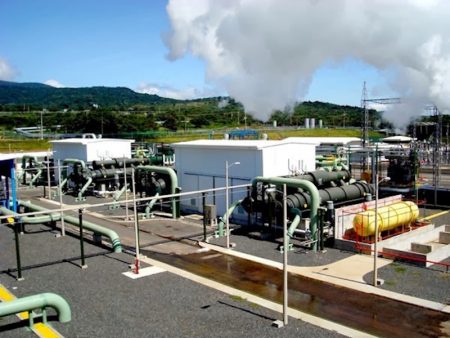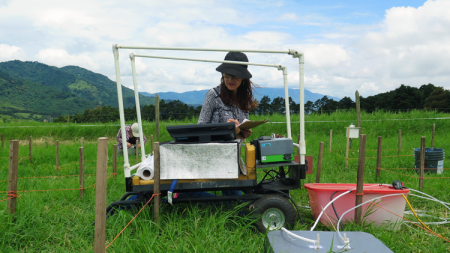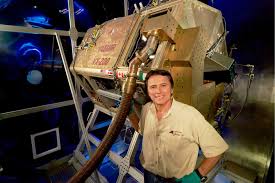January 27, 2018 – My wife and I have been going to Costa Rica for the last two years and are about to return to that country next week. For lots of reason Costa Rica is a terrific place to visit, and may even be a place where we inevitably choose to spend much of our time in the future. The country ranks first on the Happy Planet Index (HPI) not because it is a wealthy nation, but because in measuring its population wellbeing, life expectancy, income inequality, and ecological footprint, Costa Rica comes out on top.
HPI, in future, may prove more important than GDP, the current way we measure national success. Purely economic, GDP tells governments very little about the wellbeing of citizens, how stressful their lives are, how it impacts jobs and family, and how ultimately measures whether people are happy or not. But in the age of anthropogenic climate change with extreme weather events, HPI may ultimately provide nations with a means to measure future success.
Until this generation, most of us felt our children would enjoy a better life than the one we have had. Not anymore. The most recent surveys in North America and Europe state the opposite. Our measure of success, GDP, is letting us down because it isn’t designed to measure inequality in wealth distribution, social disruption from extreme weather, geopolitical uncertainty from nuclear proliferation, cyberterrorism, and more. GDP is incompatible with our planetary limits because it is growth-oriented exclusively.
Getting back to why Costa Rica is number one when its GDP per capita is one-quarter that of richer nations in Europe and North America, has everything to do with balance. The country’s economy is built on tourism and agricultural exports. It has no army, abolished in 1949. It spends government raised funds on education, health, pensions, and preserving the environment. It invests more per capita in education and health than the United Kingdom. It protects its forests and generates 99% of its electricity from renewable sources. Costa Rica is likely to be the first country on the planet to become carbon neutral.
By no means are all Costa Ricans happy. There is still income inequality, and the environmental effort towards sustainability has a few warts. But Costa Ricans say hello and goodbye with the words “pura vida,” which translates to English as “pure life” or “good life.”
Costa Rica fascinates me for more than just its HPI. Although the country is wed to tourism and agriculture, it also is experimenting with a number of technological innovations that place it at the forefront of the 21st century.
Powering a Country without Carbon
A car trip across Costa Rica takes you to the central spine of the country where wind turbines sprout everywhere. Costa Rica has been harvesting wind now for several decades. It also has constructed a major hydroelectric facility in the north creating an artificial lake, the largest in the country, that serves as a source of irrigation water for much of the farmland in Guanacaste, the driest state in the country. Added to hydro and wind is geothermal energy. That same spiny ridge where wind turbines are in abundance features a series of volcanoes with geothermal energy potential.
Last year when we visited Rincon, one of Costa Rica’s many volcanoes, we saw evidence of the country’s investment in geothermal energy which is greater than countries like Iceland, and New Zealand, both known for this type of energy source. The challenge for the country is to ensure that its commitment to preserve its natural habitats does not get compromised by the build-out of geothermal plants, some of which are causing incursions into the country’s conservation zones. By 2025 Costa Rica plans to grow the number of geothermal plants to nine in total from the current six. This will make this West Virginia-sized country one of the top ten in the world in geothermal technology and capacity.
Geothermal, wind, hydroelectricity, and the beginning of an investment in solar may make the country the first negative emissions state.

Smart Agriculture and Biochar to Reduce Greenhouse Gases, Fertilizer and Pesticide Use
Which country or state is the largest producer of pineapples in the world? It’s not Hawaii. It’s Costa Rica. Pineapple is a pretty intensive crop to grow. Fertilizers, pesticides and machine use make producing these fruit carbon intensive. At the University of Costa Rica’s Environmental Pollution Research Centre (CICA), however, agricultural scientists are working with biochar from pineapple residue. Waste from pineapple harvesting amounts to 10 million tons every 18 months. The pineapple after-harvest residue is a source of greenhouse gas emissions and a breeding ground for insect pests that devastate local cattle.
Turning the pineapple residue into biochar seems like a good idea. It can replace fertilizer and sequester carbon at the same time. The scientists are studying the impact of introducing biochar into fields growing pineapple by using trace radioactive Carbon 14 (14C), the same carbon used to date archeological finds. The 14C will help establish the resiliency of carbon sequestration done this way.
Biochar application from pineapple residue can be used on pasture as well helping to offset greenhouse gas emissions from dairy and beef cattle. Researchers are directly gathering soil emissions data from farmers’ and ranchers’ fields. States Mohammad Zaman, a soil scientist, “This information arms policymakers with sufficient knowledge to make informed decisions about national and international carbon policies, which will ultimately determine the future of the planet.”

Contributing to Space Propulsion to Take Us to Mars and Beyond Faster
Costa Rican physicist, Franklin Chang Diaz, is the founder of Ad Astra Rocket Company, and the inventor of VASIMR, the Variable Specific Impulse Magnetoplasma Rocket. NASA calls this the engine that does matter. The meaning can be interpreted several ways. The engine converts matter into a plasma to create thrust. And the engine matters because if successful testing to be completed this year proves the technology is viable, it may become the way NASA moves satellites and humans around once they get into space. Ad Astra’s headquarters is in Liberia, Guanacaste, in the dry northwest of the country.
When Andy Weir wrote his book, “The Martian,” he featured VASIMR as a technology that would get humans to Mars. Chang Diaz is a graduate of MIT and an astronaut who has served on the International Space Station and the Space Shuttle over several decades.When he retired from NASA in 2005 to form Ad Astra with the goal of designing an engine that would reduce the time to get to Mars and other places in the Solar System much faster. VASIMR, claims Chang Diaz will get astronauts from Earth to Mars in 39 days versus 6 to 8 months by chemical propulsion.
VASIMR is a hybrid technology that requires a power source to heat the matter injected into it to create plasma. The hybrid options for a trip to Mars could be large solar panels or a small nuclear reactor. This year the plan is to demonstrate VASIMR in a 100-hour continuous operation generating 100-kilowatts. If successful with this prototype, this Costa Rican company will, in the very near future, be the engine of choice for exploring the Solar System.










